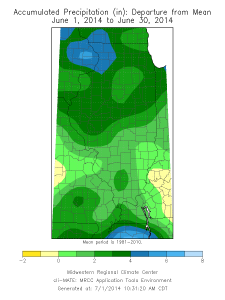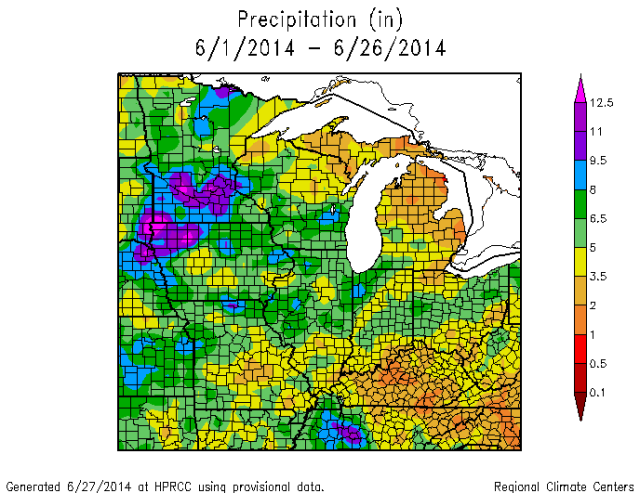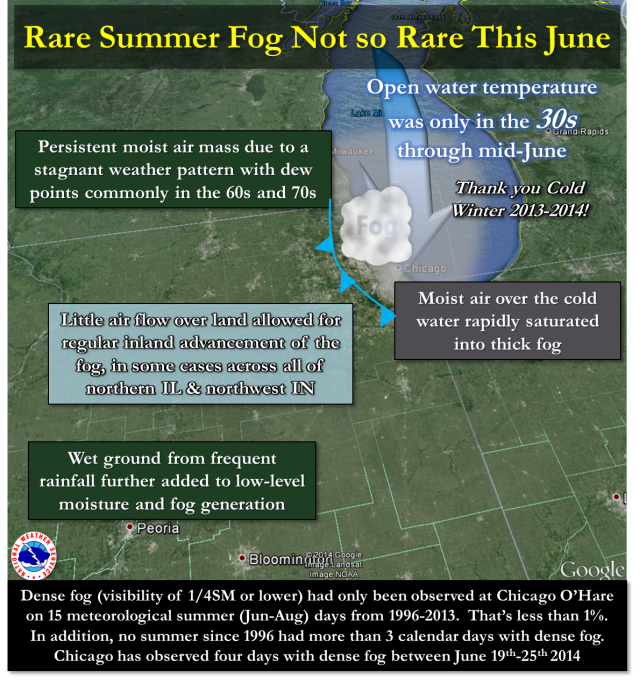The statewide average precipitation for June 2014 in Illinois was 6.78 inches, 2.58 inches above average and the 8th wettest June on record. The wettest June on record was 1902 with 8.27 inches. Four out of the last five June’s have been wetter than average in Illinois:
- 2010: 7.71 inches, 3.51 inches above average
- 2011: 6.69 inches, 2.49 inches above average
- 2012: 1.73 inches, 2.47 inches below average
- 2013: 5.33 inches, 1.13 inches above average
- 2014: 6.78 inches, 2.58 inches above average
The statewide average temperature for June 2014 in Illinois was 72.9 degrees, 1.1 degrees above average.
Here are the maps of accumulated rainfall in June, 2014, as well as the departure from the 1981-2010 average. The rainfall was widespread across the state, and above-average as well. The area with the highest departures was the northwest corner of the state. There were 13 stations with 10 or more inches of rain in June. The wettest was Galena with 12.42 inches of rain for the month.
Much of the Corn Belt was wetter than average for June (last map) with precipitation departures from average in the range of 6 to 10 inches. That’s more than double the average in many locations. The results are high flows on many rivers and streams and flooding along the main stem of the Mississippi River south of Dubuque, IA.













